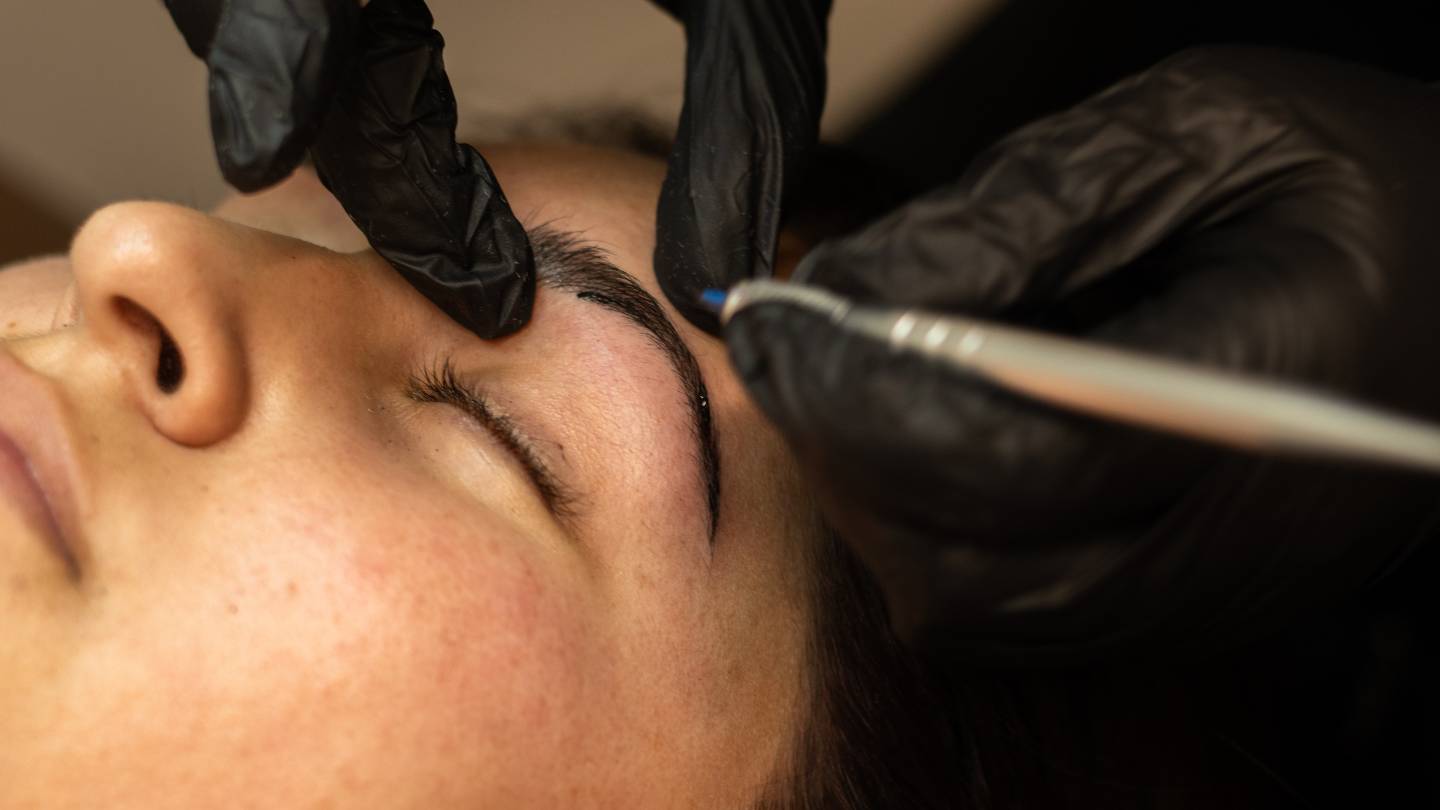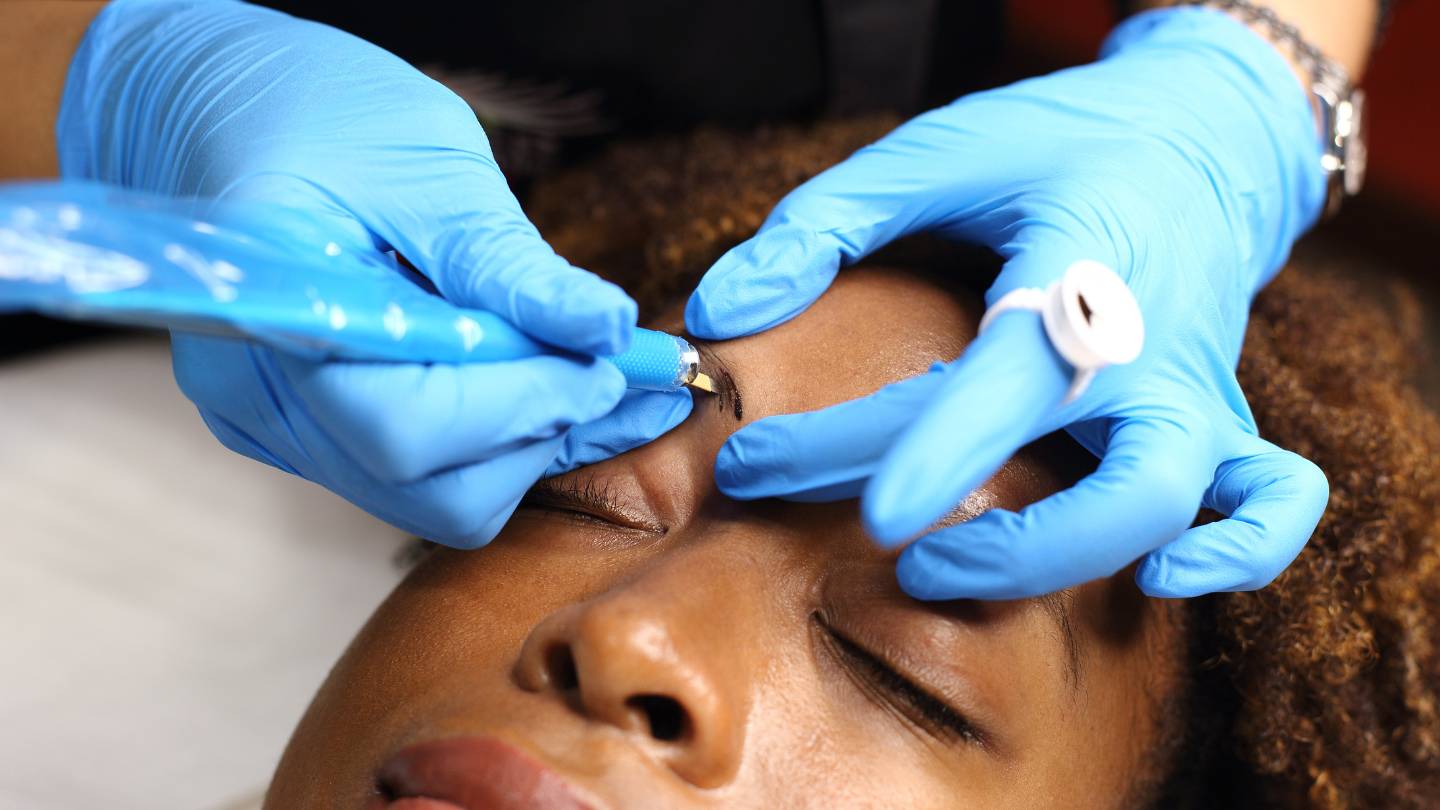Microblading has gained immense popularity as a semi-permanent solution for those seeking perfectly shaped eyebrows. However, for people with oily skin, the procedure can be more complex.
The excess oil produced by the skin can interfere with the process, the healing, and the long-term results. In this article, we will break down the essential factors that determine whether microblading is suitable for oily skin types, and offer tips for getting the best results.
Let’s get straight to the point
Microblading can be suitable for oily skin, but it comes with challenges like quicker pigment fading, blurring of hair strokes, and longer healing times. Oily skin produces excess sebum, which can interfere with pigment retention and cause a softer, less defined look.
To maintain results, more frequent touch-ups (every 6-12 months) and careful post-procedure care are necessary, including avoiding sweat and moisture. For those seeking alternatives, powder brows, henna brows, or brow lamination may offer better, more lasting results for oily skin.
Consult with a skilled artist to determine the best option for your skin type.

How Oily Skin Affects Microblading?
Oily skin is characterised by an excess production of sebum, which can have a direct impact on how well microblading works. Here are the main ways oily skin can affect the procedure:
- Pigment retention: Oily skin tends to break down pigment faster than other skin types. The oil can cause the pigment to fade quicker, leading to less defined results.
- Blurring of strokes: Due to the excess oil, the microbladed strokes may not heal as sharply as they do on dry or normal skin. This can lead to a softer appearance, which may not be ideal for those wanting crisp, hair-like strokes.
- Healing time: Oily skin can prolong the healing process. The extra oil can make it more difficult for the skin to close up and heal, potentially causing scabbing and fading.
In short, while microblading can be done on oily skin, it requires special attention and care both during the procedure and in the aftercare phase.
Pigment Retention On Oily Skin
One of the main concerns for people with oily skin is how well their skin retains the pigment. Microblading works by depositing pigment under the surface of the skin, but oily skin can produce more sebum, which might interfere with the pigment staying in place.
- Quicker fading: The oil in the skin can push out the pigment faster than in normal or dry skin types. This means that the brows may not last as long, and touch-ups may be needed more frequently.
- Uneven retention: Oily skin can lead to uneven retention of the pigment, with some areas holding onto the colour better than others. This can create a patchy appearance.
To mitigate these issues, it’s essential to work with an experienced microblading artist who knows how to adjust the depth and technique for oily skin. Frequent touch-ups, usually every 6 to 12 months, may also be necessary to maintain the desired look.
Blurring Of Hair Strokes
For many people, the appeal of microblading lies in its ability to create the illusion of natural hair strokes. Unfortunately, oily skin can cause these strokes to blur, especially during the healing process.
- Softened lines: The constant oil production can cause the sharp lines of the hair strokes to become blurred or spread out. This results in a softer, more powdered look rather than the crisp, hair-like effect that microblading is known for.
- Pigment spreading: In some cases, the pigment may spread during healing, which can further contribute to a less defined look.
To avoid this, a skilled microblading artist may recommend combining microblading with shading techniques (hybrid brows) to add depth and definition. This can help counter the natural tendency of oily skin to blur the strokes.

Healing Process For Oily Skin
Oily skin typically requires a longer healing time than normal or dry skin. This extended healing period can introduce complications if not properly managed. Here’s what you can expect during the healing process:
- Slower closure: Because of the excess oil, it may take longer for the microbladed area to fully close up and heal. This increases the risk of scabbing, which can pull pigment from the skin.
- Additional care required: Oily skin requires extra care during the healing period to ensure the best results. This includes more frequent cleaning and avoidance of skincare products that can further irritate the skin or cause it to produce even more oil.
Your artist will provide specific aftercare instructions, but generally, people with oily skin should avoid any activities that might cause excessive sweating or oil production, such as exercise or exposure to heat, during the first 7 to 10 days of healing.
Post-Care For Oily Skin
Aftercare is essential to ensure that your oily skin heals properly and holds onto the pigment as long as possible. Here are some of the most important aftercare tips for those with oily skin:
- Keep the area dry: Avoid getting the treated area wet for at least 10 days after the procedure. This includes water, sweat, and any other liquids. Moisture can cause the pigment to fade or blur during the healing process.
- Avoid sweating: Stay away from activities that cause heavy sweating, such as exercise, saunas, or steam rooms. Sweat can push the pigment out of the skin, especially during the healing period.
- Use gentle products: Only use the recommended ointments or creams provided by your microblading artist. Avoid any heavy creams or oils on or near the treated area.
Following these aftercare instructions closely will help ensure that your eyebrows heal properly and maintain their shape and colour for as long as possible.
Alternatives To Microblading For Oily Skin
If you’re still unsure whether microblading is the right choice for your oily skin, there are other eyebrow enhancement options to consider:
- Powder brows: This technique creates a soft, gradient effect across the brows, making it perfect for oily skin. It’s more durable than microblading and less prone to fading or blurring.
- Henna brows: Henna offers a temporary, natural alternative to microblading. It stains both the hair and skin, creating a similar effect without the need for permanent pigment.
- Brow lamination: This technique helps reshape and lift the natural brow hairs for a fuller look. While it doesn’t involve pigment, it can be an excellent option for those who prefer a non-invasive solution.
These options may offer more lasting results for those with very oily skin and can be done more frequently without the need for invasive procedures.
Conclusion
Microblading can be suitable for oily skin types, but it requires careful consideration and a skilled artist to achieve the best results. Pigment retention issues, blurring of hair strokes, and a longer healing process are common challenges that come with oily skin.
However, by following proper aftercare and opting for frequent touch-ups, it is possible to maintain defined and beautiful brows. For those hesitant about the potential downsides, exploring alternatives such as powder brows, henna brows, or brow lamination may offer better solutions.
Consulting with an experienced microblading artist and discussing your skin type and goals is key to determining the most suitable option for you.
FAQs About Microblading
Is Microblading Recommended For People With Oily Skin?
Yes, microblading is generally suitable for oily skin types. However, individuals with oily skin may need touch-ups more frequently than those with drier skin.
Does Oily Skin Affect The Longevity Of Microblading Results?
Yes, oily skin can impact the longevity of microblading results. The excess oil can cause the pigment to fade faster, and touch-ups may be required to maintain the desired look.
How Can I Make Microblading Last Longer On Oily Skin?
Following aftercare instructions is crucial. Avoiding excessive sun exposure, using recommended ointments, and avoiding oil-based skincare products can help prolong the results on oily skin.
Are There Any Specific Challenges For Microblading On Oily Skin?
Oily skin can make the healing process a bit different. Keeping the treated area clean and dry is important to prevent infections, and some clients may experience slightly more swelling.
Can People With Oily Skin Still Achieve Natural-Looking Results With Microblading?
Absolutely. Skilled technicians can adapt the microblading technique to suit different skin types, ensuring the results look natural regardless of skin oiliness.

